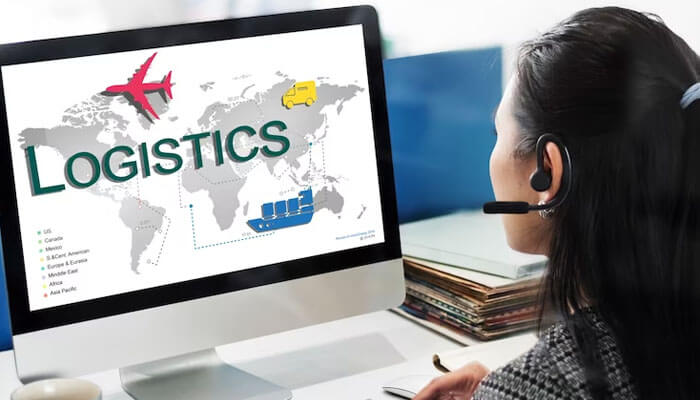Shipping is an integral part of the e-commerce business. It’s crucial for the success of your business that you streamline your shipping process and improve your delivery times. A smooth shipping process not only increases customer satisfaction but also helps you save time and money. In this article, we’ll discuss some tips for streamlining your shipping process and improving delivery times.
Efficient Order Processing:
Implementing streamlined order processing procedures is crucial to minimize delays in your e-commerce business. One effective way to achieve this is by investing in an automated order management system that seamlessly integrates with your e-commerce platform. By doing so, you can facilitate efficient order fulfillment, reduce manual errors, and enhance the overall order processing workflow. With automated order management, you can streamline tasks such as order entry, inventory management, and order tracking, leading to faster order processing, improved accuracy, and ultimately, enhanced customer satisfaction.
Inventory Management:
Maintaining accurate inventory levels is essential to prevent stockouts and minimize delays in order fulfillment. To effectively manage your inventory, it is recommended to utilize inventory management software. This software enables you to track stock levels in real time, set up automated alerts for low inventory, and optimize your replenishment process. By leveraging inventory management software, you can efficiently monitor stock levels, identify potential shortages in advance, and take proactive measures to replenish your inventory promptly. This helps ensure smooth order fulfillment, reduces the risk of stockouts, and improves overall operational efficiency in your e-commerce business.
Packaging Optimization:
Optimizing your packaging is crucial to minimize dimensional weight and control shipping costs in your e-commerce business. One effective strategy is to use appropriately sized packaging materials that align with the size and weight of your products. By avoiding excessive packaging, you can reduce dimensional weight and potentially qualify for lower shipping rates. Additionally, consider lightweight options that still provide sufficient protection for your items, as this can further contribute to cost savings.
Shipping Carrier Selection
When choosing a shipping carrier for your business, it’s essential to evaluate multiple options to find the best fit. Take the time to compare factors such as pricing, service quality, delivery speed, and coverage areas. By carefully assessing these aspects, you can make an informed decision that aligns with your specific shipping requirements. Additionally, don’t hesitate to negotiate shipping rates based on your shipping volume. Many carriers are open to discussing rates and offering discounts for businesses with high shipping volumes. Consider using a mix of carriers as well to maximize efficiency and leverage the strengths of each carrier for different types of shipments. This strategic approach to selecting shipping carriers can help you optimize costs, improve delivery times, and provide reliable shipping services to your customers.
Consider Ship Now Logistics for your shipping needs. They offer a comprehensive range of shipping services designed to meet the unique requirements of businesses. With their expertise, reliable network, and commitment to customer satisfaction, they can provide you with efficient and cost-effective shipping solutions.
Shipping Software and Integration:
To streamline your shipping process and improve efficiency, it is recommended to utilize shipping software that seamlessly integrates with your e-commerce platform. This integration enables you to access real-time shipping rates, streamline label printing, and efficiently track orders throughout the shipping journey. By leveraging shipping software, you can automate various tasks and reduce the risk of manual errors. Automation features such as address validation, batch processing, and shipping rule configurations can significantly save time and enhance accuracy in the shipping process. With real-time data and automated workflows at your disposal, you can improve order fulfilment speed, provide accurate tracking information to customers and optimize your overall shipping operations. For these reasons it is very recommended that businesses invest in shipping software to make their shipping journey as efficient as possible for their customers, you can purchase different types of this software such as magento 2 integrations, from numerous online retailers.
Streamlined Pick and Pack Processes:
To minimize order fulfillment time and improve operational efficiency in your warehouse, it is crucial to optimize your warehouse layout and pick and pack processes. Start by organizing your products in a logical manner, grouping them based on similarities or popular order combinations. This facilitates easier and faster access to items during the picking process. Additionally, establish efficient picking routes that reduce unnecessary travel and maximize productivity. Clear communication with warehouse staff is key to ensuring smooth operations. Provide clear instructions, implement effective training programs, and encourage open lines of communication to address any issues or bottlenecks that may arise. By optimizing your warehouse layout and pick and pack processes, you can expedite order fulfillment, reduce errors, and ultimately improve customer satisfaction by ensuring timely and accurate deliveries.
Preparing for International Shipping:
If your business offers international shipping, it is essential to familiarize yourself with the customs requirements and regulations of the countries you ship to. This knowledge will help you avoid potential delays and issues that may arise during the customs clearance process. It is crucial to provide accurate and complete customs documentation for each shipment to ensure smooth customs clearance. This includes properly declaring the contents, value, and origin of the goods. By staying informed about customs requirements and providing accurate documentation, you can minimize customs-related complications, expedite the shipping process, and provide a positive experience for your international customers.
Shipment Tracking and Communication:
To enhance the customer experience and provide transparency in the shipping process, it is essential to implement a reliable tracking system that enables customers to track their packages at every stage. This tracking system should provide real-time updates on the package’s whereabouts, estimated delivery dates, and any significant milestones. Additionally, proactively communicating shipping updates and delivery notifications to customers is crucial in managing their expectations and keeping them informed about the progress of their shipments. By providing timely and accurate information, you can instil confidence in your customers, reduce inquiries or concerns, and foster a positive relationship built on trust and transparency.
Returns and Exchanges:
To ensure a seamless experience for your customers and promote customer satisfaction, it is crucial to streamline your returns and exchanges process. One key aspect of this is simplifying the return authorization process. Make it easy for customers to initiate returns by providing clear instructions and a user-friendly return request system. Clearly communicate return instructions, including the required documentation, packaging guidelines, and any specific conditions or restrictions. Offering convenient return options, such as prepaid return labels, can further enhance the customer experience and remove barriers to returning items. By simplifying the returns process and providing clear instructions and convenient options, you can streamline operations, improve customer satisfaction, and foster long-term customer loyalty.
Continuous Evaluation and Improvement:
To continuously improve your shipping process and ensure optimal performance, it is crucial to regularly analyze your shipping operations, gather feedback from customers, and monitor key performance indicators (KPIs). By analyzing your shipping process, you can identify bottlenecks, inefficiencies, or areas for improvement that may be affecting delivery times or customer satisfaction. Gathering feedback from customers provides valuable insights into their experiences and allows you to address any issues or concerns promptly. Monitoring KPIs such as order processing time, delivery time, shipping costs, and customer satisfaction metrics helps you track the performance of your shipping operations and identify trends or areas that require attention. With this information in hand, you can implement changes, such as process optimizations, technology upgrades, or staff training, to streamline your shipping operations and enhance overall efficiency. By continually assessing and improving your shipping process, you can maintain high standards, meet customer expectations, and drive business growth.
By implementing these tips, you can streamline your shipping process, improve delivery times, and enhance the overall customer experience. These improvements can lead to higher customer satisfaction, increased customer loyalty, and ultimately, business growth.
Conclusion
In conclusion, streamlining your shipping process and improving delivery times are essential for the success of your e-commerce business. By implementing the tips discussed in this article, such as efficient order processing, inventory management, packaging optimization, and selecting the right shipping carriers and software, you can enhance the efficiency of your shipping operations. Additionally, focusing on streamlined pick and pack processes, preparing for international shipping, ensuring shipment tracking and communication, and improving returns and exchanges processes contribute to a seamless customer experience. Continuous evaluation and improvement are crucial to identify areas for optimization and ensure ongoing success. By prioritizing these strategies, you can achieve higher customer satisfaction, increase customer loyalty, and ultimately drive business growth in the competitive e-commerce landscape.



